Measuring the water quality of Seymour, like other lakes in Vermont, is an important scientific endeavor because without data, we cannot really know the status of our water. It is also important to do this over time so that trends can be understood and action taken as a result. The primary vehicle to address this is the Vermont Lay Monitoring Program, administered by the Vermont Department of Environmental Conservation (DEC).
Measurements are done by lay persons on more than 80 Vermont lakes in the summer of each year. Seymour Lake has participated in this program since its beginning in 1979, but in the early years only clarity was measured. Unfortunately, it would be valuable to have phosphorus and chlorophyll data from early years, but data was never taken because of financial limitations in the program. Seymour has had many lay monitors over the years and we have been lucky to have Tom Emery for the pas 25 years. Tom has measured water clarity using a Secchi disk as seen below. Using scientific protocols, he collects water samples which he delivers to Vermont DEC’s laboratories to be tested for phosphorus and chlorophyll.
Beginning in 2023 the protocols and equipment have been refined to provide more consistent and accurate data by using a viewing tube to more accurately view the Secchi disk and an improved collection tool as seen below for collecting water samples to be tested for phosphorus and chlorophyll. Data collected starting in 2023 will become more valuable after a few years when trends can be best determined under the new conditions.
Data Collection
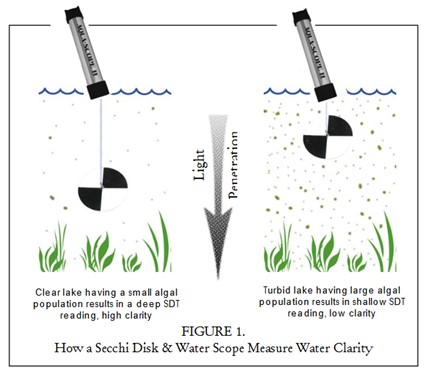
Data collected starting in 2023 will become valuable after a few years when trends can be best determined under the new conditions. VTDEC Lay Monitoring Manager, Mark Mitchell, completed a study of what was working in the protocols used in the past and revised the protocols, making them more effective using current knowledge. Lay monitors are now able to test for phosphorus and chlorophyll at 20 meters as well as at the surface. They are also now, as part of the new protocol, testing for caffeine, which is an indicator of fecal contamination.
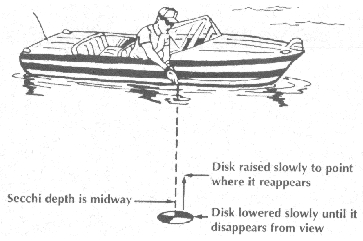
The illustration on the left shows the Secchi disk as used from 1979 – 2022. Beginning in 2023 the Lay Monitor will use a viewing tube to observe the Secchi disk as shown below.
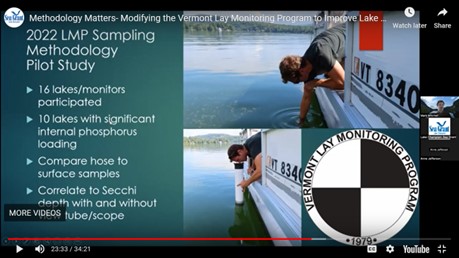
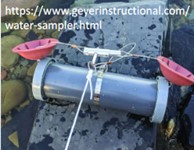
This water collection tool on the left will be used on Seymour Lake starting in 2023 and replaces the hoses previously used. This tool will provide better consistency of data collection among different Lay Monitors.
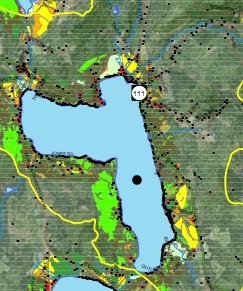
The black dot in the south bay of the lake marks the approximate location where Lay Monitoring samples are obtained. This is a very deep part of the lake and samples are taken here as deeper water is best place for water to mix and and gives best test overall results as here the water is not influenced by specifice shore line events.
Water Quality Data
The following graph shows the average of the yearly measurements since the program’s inception in 1979 and incorporates the latest data for 2022. The data results from Tom Emery’s work as a Lay Monitor. Chlorophyll levels, a measure of algae in the water, are relatively constant. Total Phosphorus which is the best indicator of nutrients in the water, showed a higher than normal concentration from 2001 to 2011. Clarity is about the same but we would like a return to the clearer levels of the 80’s and ‘90s. Restoring natural vegetation on the shore and the banks of the lake’s tributaries to slow runoff containing phosphorus into the lake will do the most for the ongoing health of Seymour Lake.
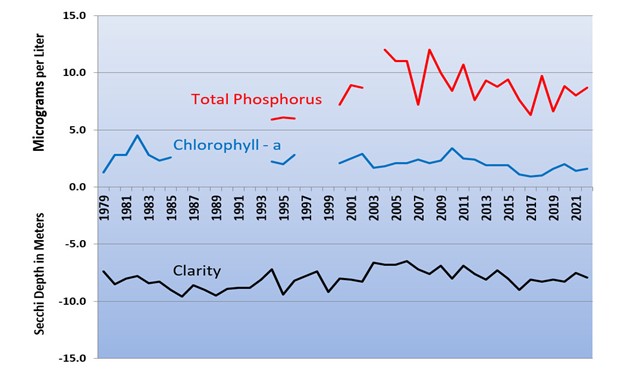
This graph provides a bit more detail regarding phosphorus.
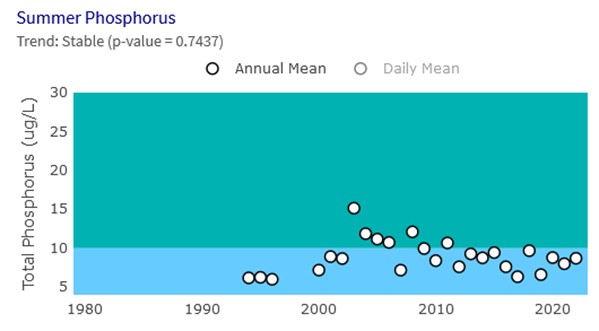
For the website describing in detail the Lay Monitoring Program, Click Here
For Lay Monitoring Reports which include measurements, Click Here and then do a search on the page (CTRL-F on computers, other ways on ipads, etc) – there will be two results: one will allow you to view various reports and one is a map of the Seymour Lake area.
The Vermont Lake Score Card is a method of evaluating lakes as Good, Fair, or Reduced in four specific areas:
- Water Quality
- Aquatic Invasive Species
- Atmospheric Pollution
Shoreland and Lake Habitat
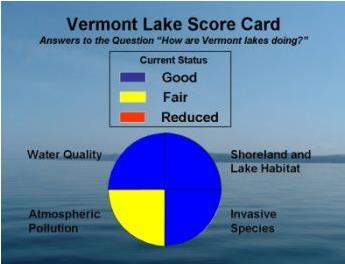
For the website for the Score Card and in depth descriptions of the card data Click Here
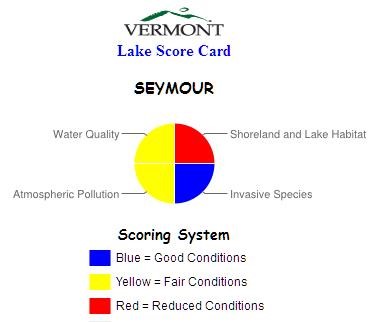
Seymour is rated Good for Invasive species as one would expect due to the total lack of invasive species.
Most all lakes are rated Fair for Atmospheric Pollution. All Vermont lakes, but two, have fish consumption advisories because of airborne pollution resulting in mercury contamination in fish. Thus Seymour receives the yellow or fair rating for as do most other Vermont lakes. Neighboring states experience similar issues.
Seymour is rated Fair for Water Quality. The Fair designation result is given to lakes with moderately declining trends which are derived from a statistical trend analysis of phosphorus, chlorophyll-a and the Secchi disc data over time. As you can see from the graph of Seymour Lake Lay Monitoring data, there is had been a moderate downward trend shown overall in both phosphorus and clarity. Note that in recent years the downward trend in phosphorus seems to have stabilized at a lower level which is much better, but still not as good as in the 1990’s.
Seymour is rated Reduced Conditions for Shoreland and Lake Habitat. This is due to being one of many lakes in Vermont with a high density of shoreland development. As mentioned above in the preamble, the adoption by lake property owners of best practices to minimize the impact of lakeshore disturbance, much of the lakeshore can be returned to favorable habitat of natural vegetation. This is our greatest challenge.
